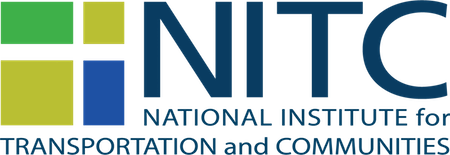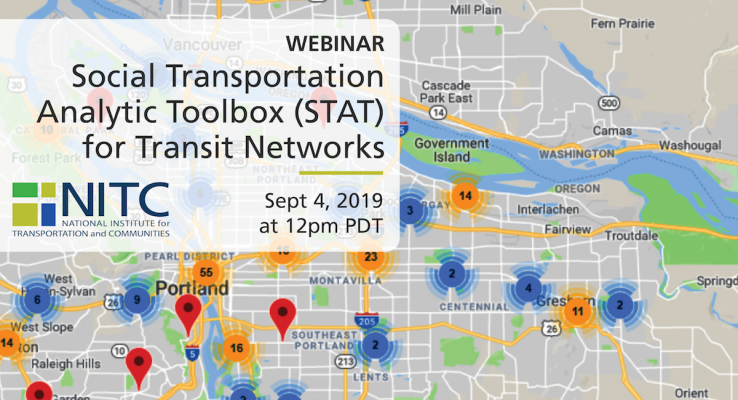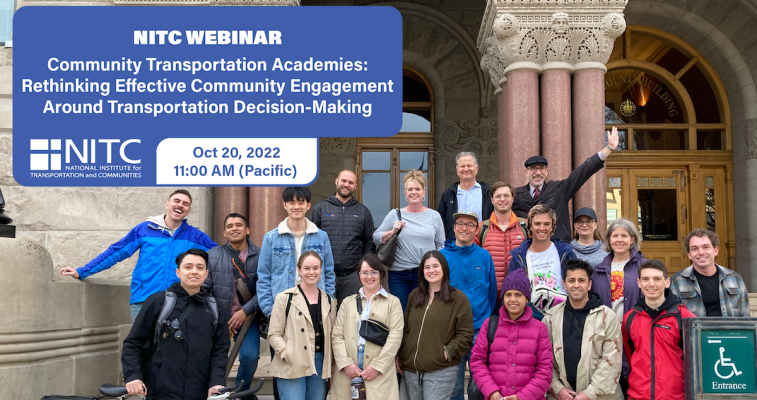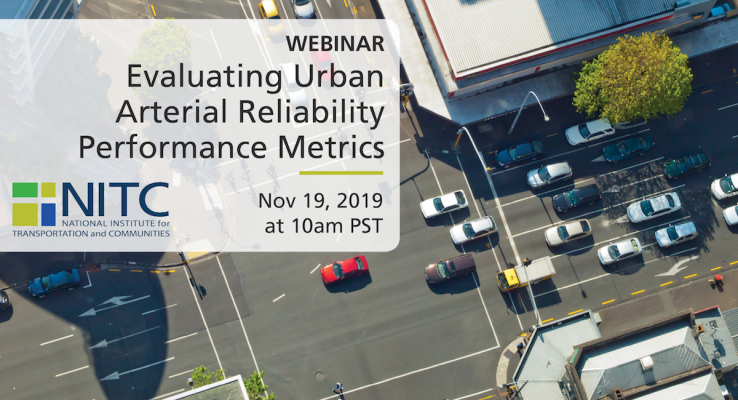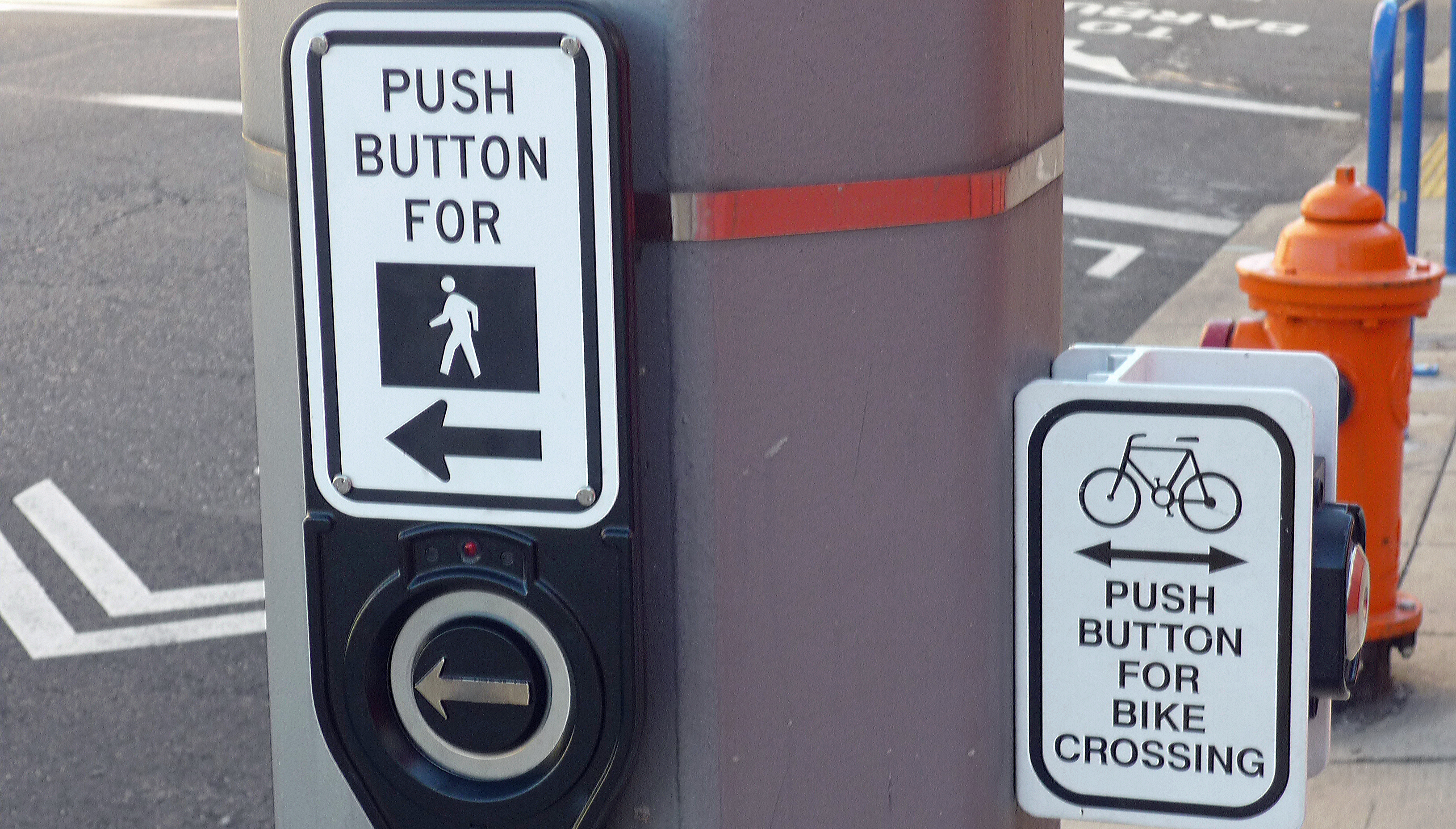Please join the Portland State University Intelligent Transportation Lab and the Oregon Transportation Research and Education Consortium as we host a Transportation Research Board webinar on climate change mitigation and adaptation, followed by an informal discussion on climate change transportation impacts and planning in the Pacific Northwest. This webinar will explore the findings of Transportation Research Board Special Report 299: A Transportation Research Program for Mitigating and Adapting to Climate Change and Conserving Energy. Committee chair, Michael Meyer, will provide an overview of the research programs recommended by the committee that can be used to develop guidance to policy makers. When: Wednesday, December 2, 2009 Where: Portland State University Intelligent Transportation System Lab 1930 SW 4th Ave, Room 315 Time: 11 am - 12:45 pm
Portland State University faculty and students presented their work at the National Urban Freight Conference (NUFC) in Long Beach, CA October 21-23, 2009. Dr. Miguel Figliozzi presented "Emissions & Energy Minimization Vehicle Routing Problem" and "A Study of Transportation Disruption Causes and Cost in Containerized Maritime Transportation." Also, graduate research assistants Ryan Conrad and Nikki Wheeler presented research projects sponsored by OTREC. Ryan presented "Algorithms and Methodologies to Analyze and Quantify the Impacts of Congestion on Urban Distribution Systems Using Real-world Urban Network Data" and Nikki presented "Analysis of the Impacts of Congestion on Freight Movements in the Portland Metropolitan Area." NUFC brings together researchers and practitioners in the public and private sectors from many disciplines within freight transportation. This conference is the only one of its kind in the US, and brought attendees and presenters from across the US, Canada and Europe.
PRESENTATION ARCHIVE
Miss the webinar or want a look back?
OVERVIEW
This webinar will present an open-source socio-transportation analytic toolbox (STAT) for public transit system planning. This webinar will consist of a demonstration of the STAT toolbox, for the primary purpose of getting feedback from transit agencies on the tool's usefulness. We are especially interested in hearing about any improvements that would aid transit agencies in implementing it.
The STAT toolbox was created in an effort to integrate social media and general transit feed specification (GTFS) data for transit agencies, to aid in evaluating and enhancing the performance of public transit systems. The toolbox enables the integration, analysis, and visualization of two major new open transportation data sources—social media and GTFS data—to support transit decision making. In this webinar, we will introduce how we...
Read moreThe video begins at 1:44.
Oliver Smith (USP PhD) - Peak of the day or the daily grind? Commuting and subjective well-being
To understand the impact of daily travel on personal and societal well-being, measurement techniques that go beyond satisfaction-based measures of travel are used. Such metrics are increasingly important for evaluating transportation and land-use policies. This study examines commute well-being, a multi-item measure of how one feels about the commute to work, and its influences using data from a web-based survey that was distributed to Portland, Oregon, U.S.A. workers. Valid surveys (n=828) were compiled from three roughly equally sized groups based on mode: bike, transit and car users. Average distances between work and home varied significantly among the three groups. Descriptive results show that commute well-being varies widely across the sample. Those who bike to work have significantly higher commute well-being than transit and car commuters. A multiple linear regression model shows that along with travel mode, traffic congestion, travel time, income, health, job satisfaction and residential satisfaction also play important individual roles in shaping commute well-being. While more analysis is needed, these results support findings in previous research that commuting by bike enhances well-being while congestion detracts from well-being. Implications...
Read morePRESENTATION ARCHIVE
OVERVIEW
This webinar will introduce you to the concept of the Community Transportation Academy (CTA), a model which has been operating in Portland for over 30 years in the form of the Portland Traffic and Transportation (PTT) class. Now catching on in other cities, the project team recently implemented the Wasatch Transportation Academy (WTA) in Salt Lake City. The presenters also include key stakeholders (and guest lecturers) in the WTA, and the PTT instructor. The presentation will include discussions about why CTAs can be good for both community members and transportation agencies/practitioners, and how you can bring a CTA to your city.
KEY LEARNING OUTCOMES
- How to make interactions between community members and transportation agencies more effective
- How to increase human capital and community capacity by teaching community members how and where they can engage in transportation decision-making processes
- Lessons from transportation...
PRESENTATION ARCHIVE
Miss the webinar or want a look back?
OVERVIEW
With worsening congestion, travel time reliability is increasingly becoming as critical as average travel times in affecting travel choices. Researchers from Portland State University (PSU) partnered with Washington County, Oregon to offer data-driven strategies in prioritizing funding for travel time reliability improvements on their urban arterials. The vast majority of existing research on travel time reliability has focused exclusively on freeways. Avinash Unnikrishnan, Sirisha Kothuri and Jason C. Anderson leveraged Bluetooth sensors provided and deployed by Bluemac Analytics to identify problem areas in the county. Set up at intersections throughout Washington County, the sensors are able to calculate travel time from one intersection to another by matching Bluetooth signals from devices in people's cars. The researchers evaluated the Bluetooth travel time data to understand the temporal variation in travel time reliability metrics on these urban arterials, including factors related to time of day, weather, and holidays....
Read moreThe video begins at 3:22.
Steve Gehrke (CEE PhD) - Application of Geographic Perturbation Methods to Residential Locations in the Oregon Household Activity Survey: Proof of Concept
Travel demand models have advanced from zone-based methods to favor activity-based approaches that require more disaggregate data sources. Household travel surveys gather disaggregate data that may be utilized to better inform advanced travel demand models and also improve the understanding of how nonmotorized travel is influenced by a household’s surrounding built environment. However, the release of these disaggregate data is often limited by a confidentiality pledge between the household participant and survey administrator. Concerns regarding the disclosure risk of survey respondents to household travel surveys must be addressed before these household-level data may be released at their disaggregate geography. In an effort to honor this confidentiality pledge and facilitate the dissemination of valuable travel survey data, this research: (i) reviews geographical perturbation methods that seek to protect respondent confidentiality; (ii) outlines a procedure for implementing one promising practice, referred to as the donut masking technique; and (iii) demonstrates a proof of concept for this technique on ten respondents to a household activity travel survey in the Portland metropolitan region. To examine the balance...
Read moreView Blanc's slides
View Mathez's slides
The video begins at 0:33.
Following the 2015 annual meeting of the Transportation Research Board, this Friday seminar will showcase some of Portland State University's student TRB research.
Presenters:
Bryan Blanc, GRA in civil and environmental engineering
Leveraging Signal Infrastructure for Non-Motorized Counts in a Statewide Program: A Pilot Study
Summary: Transportation agencies are beginning to explore and develop non-motorized...
Read more